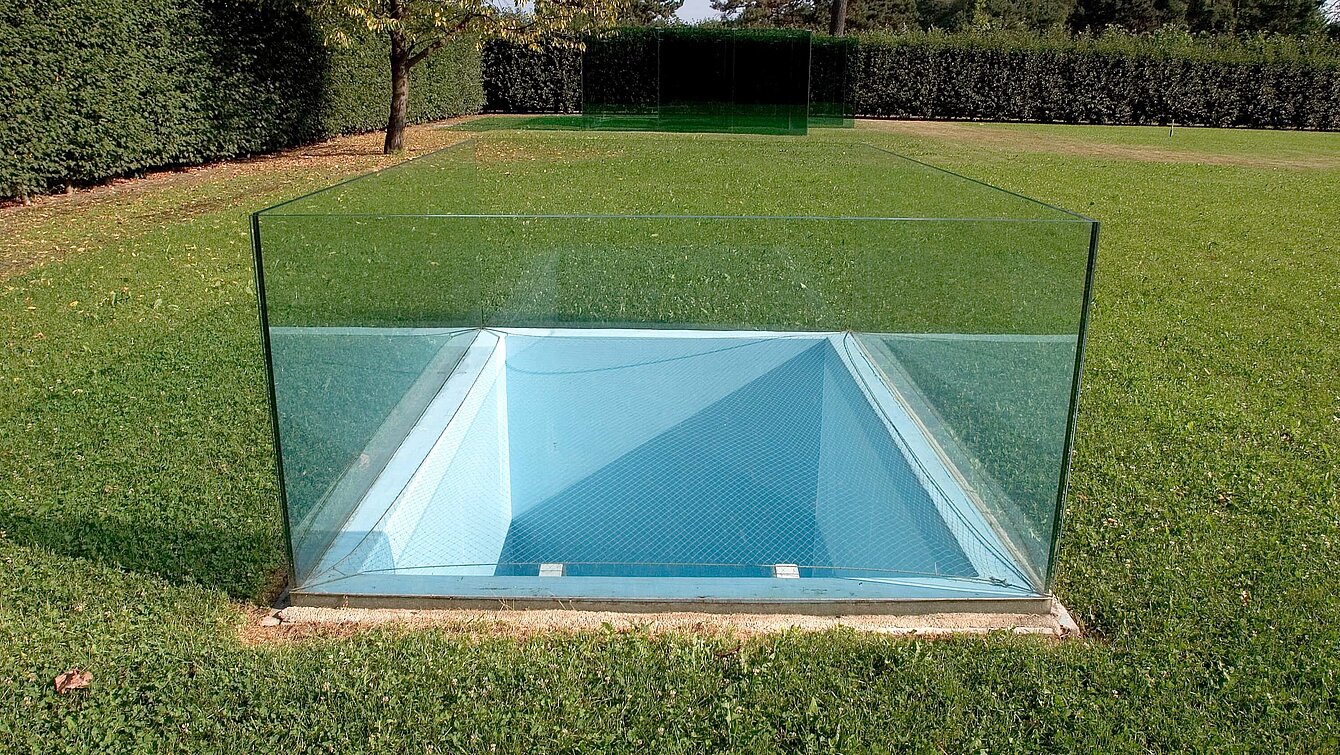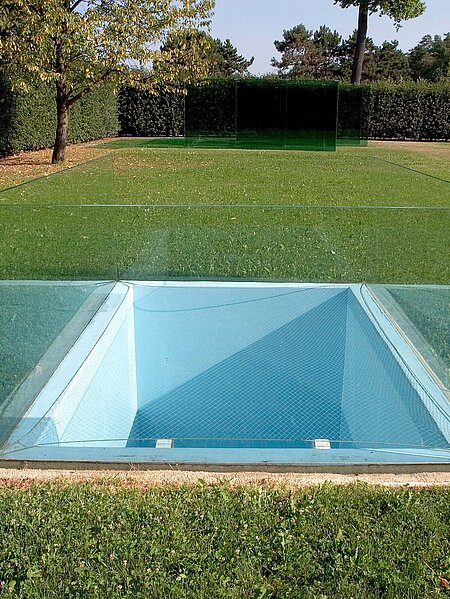Wilfling installs a diving board not in its usual place in front of a swimming pool, but instead sunk into a blue-painted pool as a mirror image. Surprisingly, this creates the same impression of perspective as if we were looking at the board from below. Since the 1960s, op art (short for optical art) has been presenting similar spontaneous perceptual illusions, which identify human vision as an active sensory process. The brain tries to interpret a meaning from the impression, but cannot seem to make sense of it.
-3m Brett [-3 meter board]
Markus Wilfling, 2004


Image Credits
Author
Günther Holler-Schuster, Kurztext adaptiert von Lisa Schantl und Lukas Sperlich
Location on map
Position 55
Owner
Österreichischer Skulpturenpark Privatstiftung
Artist biography
Show all
About the sculpture
For a long time, the visual arts were concerned with illustrating. Modern Art was the first to consciously look into this issue. An analytical viewpoint was required to counter such illusory manoeuvres critically. It was recognised that a reliable depiction of reality cannot be made. We all carry our own reality around inside us, and have different starting points for possibilities of perception.
Markus Wilfling deals with this theme in great detail in his artwork. As a member of a younger generation of artists looking into the concept of sculpture, he demonstrates, with simple as well as intense means, how easily we can “misunderstand” what we see. He shows that physical laws of nature, which are understood in a literal sense, often generate intriguing modifications to perception.
An example of this is Wilfling’s “3m board”. A springboard is placed not in front of a swimming pool but is rather laterally reversed, sunk into a pool sketched out in blue. Surprisingly, we receive the same perspective as if the board were viewed from below. The three-dimensional arrangement becomes a picture puzzle; a picture which, thanks to its special construction, conveys different pictorial contents depending on the line of sight. A multi-stable perception appears to the viewer, whereby the perception organisation clashes thanks to contradictory optical stimuli, and the brain attempts to interpret the activation of the receptors so that it makes sense.
One comes across similar, spontaneous reorganisations of perception in Op-Art, where human vision is recognised as a procedure of senses. With this piece, Markus Wilfling has transported a two-dimensional experience into three-dimensions. At the same time, he creates an illusory reality which does not exist.



















